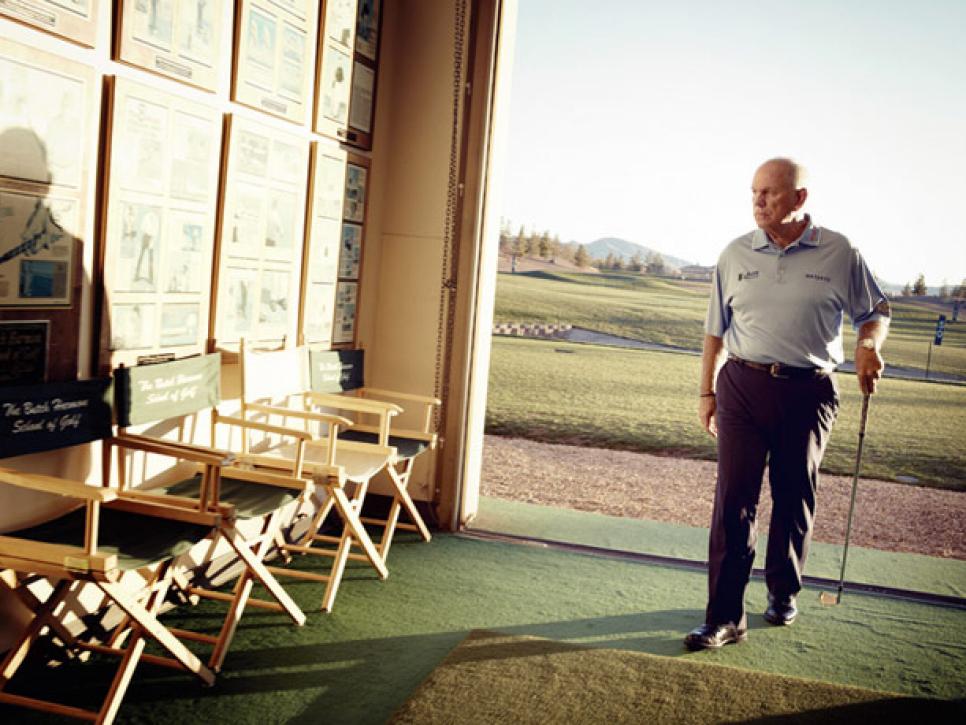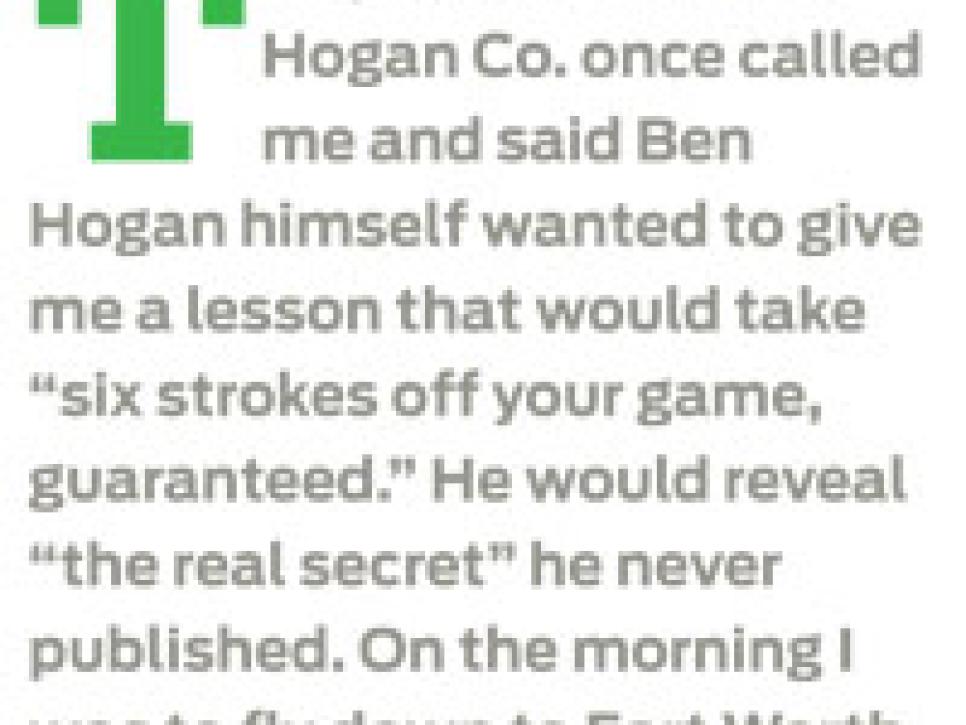Up Close With Butch

It takes only one lesson to see Butch Harmon's genius.
What's it like to take a lesson from Butch Harmon, golf's No. 1 teacher (see our new ranking of America's 50 Best Teachers
)? Earlier this year, I was struggling with my game and about to embarrass myself in a tournament, so I called Butch and booked a lesson. I flew into Las Vegas in the morning, rented a car and headed south of town to his school at Rio Secco Golf Club.
I find him in his office, where we catch up on family and friends until he gets around to asking: "So, have you been playing, and what's going on?" I wasn't playing much. My handicap had slipped a few strokes over the last couple of years. My iron shots lacked crisp contact, and overall I'd lost distance. "Let's go look at it," he says.
Butch's school setup has three indoor hitting bays that face onto the bright-green turf of a range set against a desert background. The walls are lined with hole flags signed by tournament winners he has taught. It's sunny and 95 degrees. We go outside and hit about 25 balls to warm up with the 9- through 6-iron, then go inside to have my swing videotaped.
We repeat this process two more times, with hybrids and the driver. Hit balls outside, then inside for video and analysis. One thing I notice is that the moment I start tiring in the heat from hitting balls, Butch casually interrupts to tell me about Adam Scott or Tiger Woods or Ben Hogan, often with the punch line coming from his famous father, Claude. I know Butch as a great raconteur, but in this environment I see his genius for slowing down the lesson, letting me catch my breath, and delivering a message wrapped in a story.
His first mechanical tip: "If you had never played golf before and had some athleticism, I'd tell you two things: First, you swing on two posts—your legs. Make your backswing around the right post and your follow-through around the left post. And second, you want to fold your right arm on the backswing and fold your left arm on the through-swing. Golf is that simple."
We go to the video screen, and he shows me that my posture is too bent over. "Think about raising your chin at address," he says. (I tell him what our late columnist Charley Price once said to me: "If you got any lower, you'd be playing underground.") Butch says my posture is causing me to lift through impact to make contact, which leads to inconsistency.

He then advances the video and points out my chief fault: the chicken wing. On the through-swing, my left arm rises in a blocking motion. "We're going to have you think about folding your left arm through the ball. I want you focused on just those two points: chin up at address and folding the left arm."
I immediately snap-hook the ball. "That's OK," he says. "You didn't move through the shot—point your belt buckle at the target as you fold your left arm through impact."
My ball contact improves, but I'm still hooking it. "Your clubface is shut at the top," he says. "Try fanning the clubface open as you swing away from the ball." I hit a few good ones. "Swing at half speed if that helps, and think tempo and smooth on the backswing." Later he says that to open the face on the backswing, I should try cupping my right wrist. "That's the secret Hogan didn't put in his book, but he told my dad," Butch says.
After 2½ hours, Butch meticulously prints out 11 images from the video, marks each with reminder arrows and lines, puts them in an envelope, and writes on the front:
That was back in April. By the end of the summer, my Handicap Index has improved about 2½ strokes (9.3 to 6.7). Contact is slightly better, distance about the same, scoring more consistent. I'm still working on the three points he gave me, when I remember. Golf might be that simple, but it's not easy.